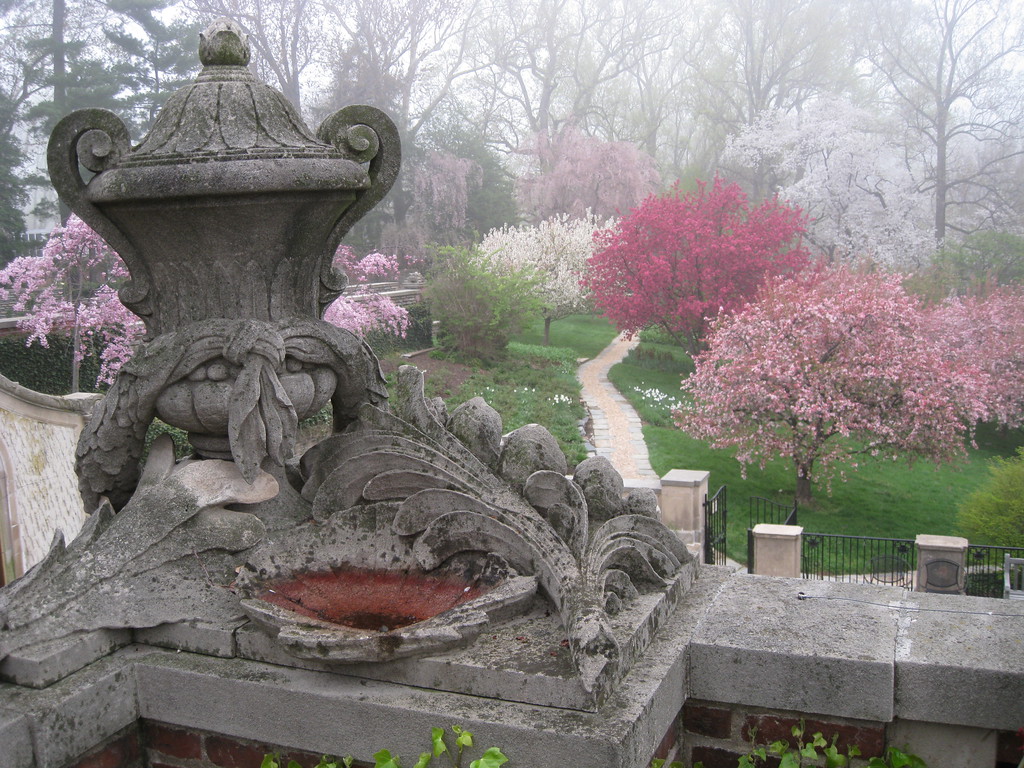
Dumbarton Oaks Gardens: Celebrating Landscape and Legacy
This year with a fanfare of blossoms and new energy in programs blending science and the arts, Dumbarton Oaks marks its one hundredth anniversary.
By Liz Macklin
Sign up for our monthly newsletter!
How do you celebrate the birthday of a garden? This year with a fanfare of blossoms and new energy in programs blending science and the arts, Dumbarton Oaks marks its one hundredth anniversary. Throughout the anticipation of openings, concerts and symposia, gardeners keep a careful balance among preservation, outreach, and attention to new research in horticulture and ecology.
In 1921 landscape architect Beatrix Farrand first visited The Oaks and found an outdated house on a sloping hillside with stables, a rose garden, pastures and magnificent trees. She began a life-long friendship with the owner Mildred Bliss, as they designed a series of cleverly linked and luxurious outdoor spaces, all following the contours of the land. From east of the house at the Orangery, the elevation fell over 55 feet to a natural pond. Inspired by the theater at the Accademia degli Arcadi Bosco Parrasio in Rome, the home of the literary society of the Arcadians, Farrand transformed the site into Lover’s Lane Pool. Along its border she placed a walkway surrounded by a series of cast stone columns and an amphitheater of over 50 seats. At times when patron Mildred Bliss drained the pool, musicians performed there for an audience of friends.¹
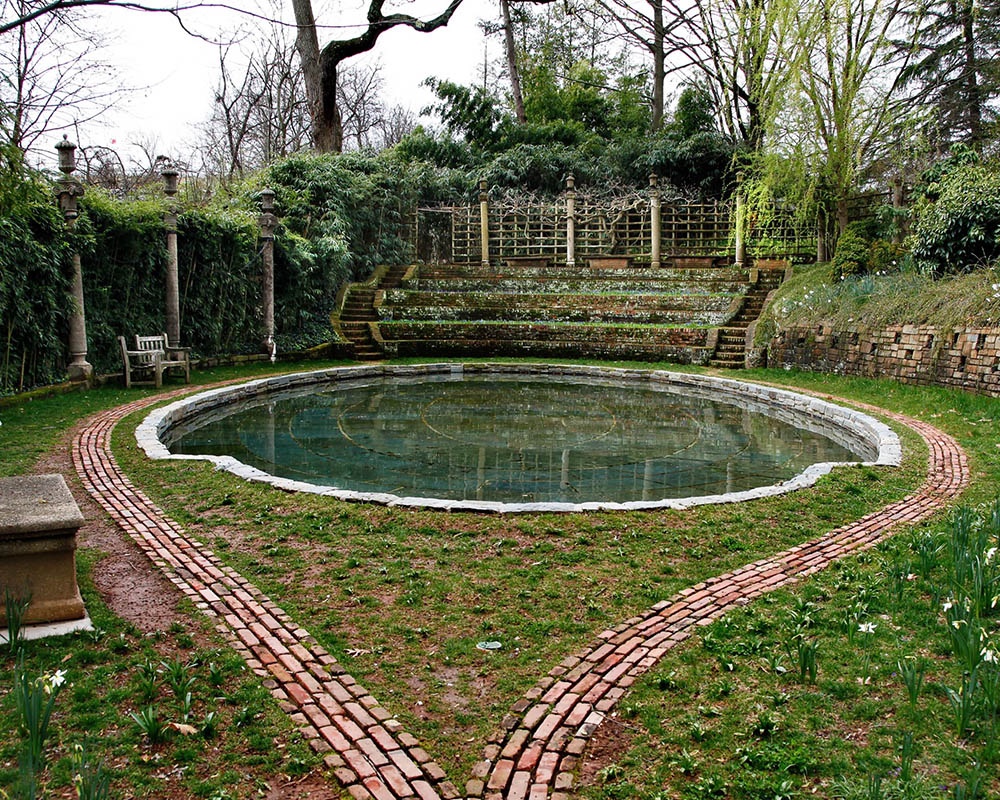
The amphitheater at Lovers’ Lane Pool ©Dumbarton Oaks
Recently the pool and amphitheater opened after restoration. I visited in early August and met two children playing on the steps. As I approached, they ran down the grassy slope of Mélisande’s Allée to the Kitchen Garden. Along the way, the fastest cried out in a high voice, “Woo hoo! Woo hoo!”
I thought the sound mimicked a bird call, but the child said, “No, I’m calling my mother.”
Their mother caught up and delivered a scolding. Later the pair discovered the motion sensitive sprinkler among the vegetables. Imagine a six and seven-year-old on a sunny, 85-degree day and then suddenly the erratic misty spray! Mother intervened.
Preservation also includes care for landmark trees. Some of the oaks, beeches, maples and cedars have grown in the garden for over a hundred years.
I’d like to believe that the beautiful parcel gilt bronze Pan inspired the mischief. He sits in the entry alcove of the amphitheater. The original statue was stolen and then replaced. Now he perches merrily with a foot across his knee, playing his pipes.²
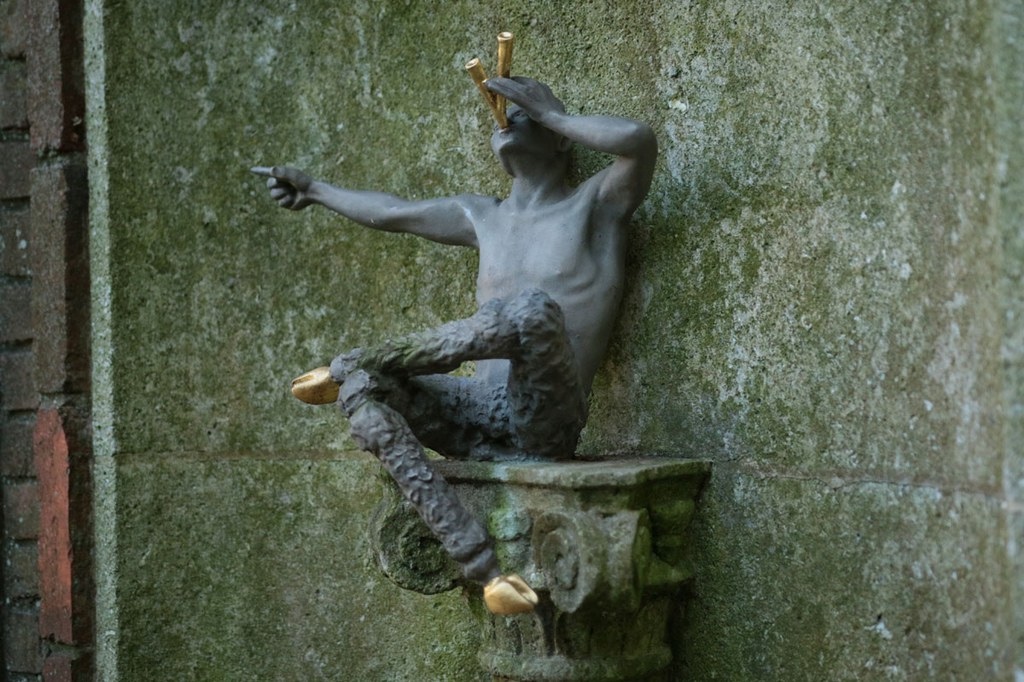
Pan at the entry to the amphitheater ©Dumbarton Oaks
Restoration of ornament in the garden is a ten year program, currently underway. Jonathan Kavalier, Director of Gardens and Grounds, said, “Farrand designed so much ornament — sculpture, fountains, one-of-a-kind furniture, arbors and balcony seating, and they are composed of a variety of materials, everything in need of attention. The right approach is a preservation approach, trying to maintain as much original material as we can and, obviously, making things safe. When things do need to be reproduced or repaired, we make those repairs in a sensitive way.”
Preservation also includes care for landmark trees. Some of the oaks, beeches, maples and cedars have grown in the garden for over a hundred years.
Kavalier said, “One of the most challenging aspects of managing the garden is that the very mature trees decline and then they have to be removed. You must think of their replacement. We try to do that well before the original tree is gone, because having mature trees is so important to the scale of the design. When you lose a mature oak tree, you need to have planted one ten years ago. Two original oak trees remain — one at R street and one near the house. My favorite tree to show people is right in front of the orangery on the south side. There’s a tree that looks half dead. It’s got a couple of odd branches — a Magnolia denudata, Yulan magnolia. Farrand talks about it in the Plant Book. It was a lovely tree that was already there, and it should be preserved as long as possible. There is very little left of it. My predecessors planted a replacement about 20 feet east of it. There’s a juxtaposition of the old and the new. It takes a lot of planning and thought.”
We purchased a microscope, and a soil science consultant has trained us on how to identify beneficial fungi.
He emphasized how stresses from pest and disease grow more challenging, as climate change becomes more evident. Warming summer temperatures threaten the deodar cedars, native to the western Himalayas, that currently stand along the north lawn.³
I asked for his opinion on recent research about trees – how they thrive with aid from one another and how networks of fungi distribute their nutrients. He said, “It’s amazing the complexity of these organisms and what they are capable of. We’re just beginning to understand. We’re very interested in soil health — producing our own compost and compost tea and using that in the gardens. We purchased a microscope, and a soil science consultant has trained us on how to identify beneficial fungi. We’ve learned how to know you have good aerobic conditions and which types of protists are good for your plants. One drop of water holds thousands of organisms. I’m not surprised that trees communicate.”
He explained that everyone benefits from the synergy between scientific studies and the mission of the garden as a home of the humanities.
From the very beginning the garden has offered an inspiring setting for the arts.
“One of the great things about how the Bliss’s set this up is that we are not only a historic Farrand garden but also an active Harvard research community with an area of garden and landscape studies. The fellows who come here to study can see the garden as a laboratory and also explore new issues in landscape architecture and landscapes in general. I know Thaisa [Thaisa Way, Resident Director of Landscape Studies] is doing some really relevant programming in the land back movement, in addition to what you might typically think of as a historic garden.”
From the very beginning the garden has offered an inspiring setting for the arts. Farrand was a proponent of artisans like Eric Ellis Soderholtz. His large sculptural garden jardinières were commissioned in the 1920s for the Fountain Terrace.⁴
“…when gardeners sit at the lunch table with scholars like the archaeologist who is using Lidar to find Mayan ruins, there are definitely connections to the land.”
Kavalier added, “When John Beardsley was Director of Landscape Studies, he curated a series of garden art installations over ten years. These brought people, who might not necessarily be interested in Farrand but were interested in art and the humanities. It was an opportunity to see how artists are inspired by the spaces.”
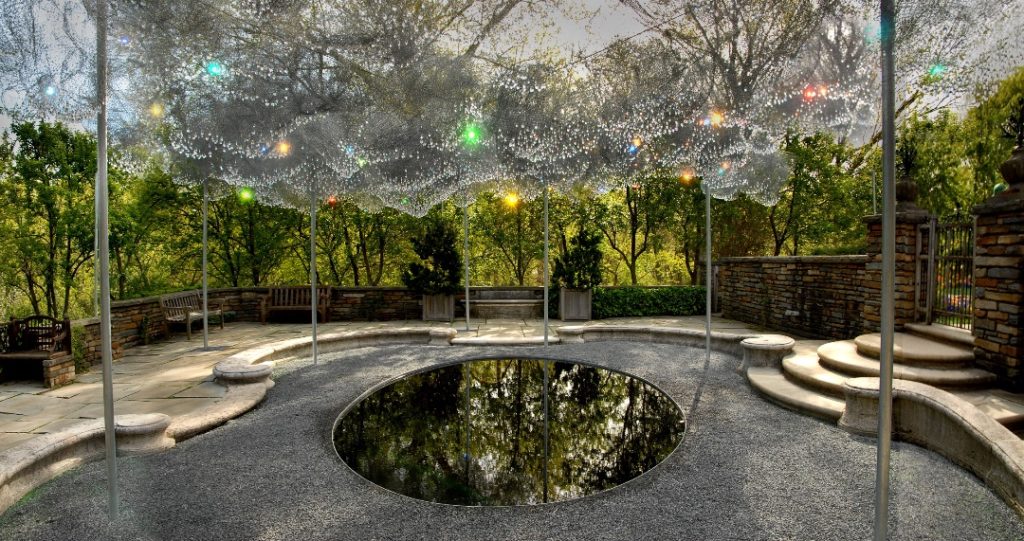
Cloud Terrace art installation by cao | perrot ©Dumbarton Oaks
The tradition of concerts and creative work in music continues with the musician-in-residence program. Carolyn Shaw collaborated to create a video, showing the gardens set to her music. A series of concerts in the coming year will include her work, as well music by other composers, including a percussion quartet composed by David Crowell, whose music often calls to mind unusual environments.⁵
Kavalier continued, “Even in the disciplines that don’t relate as closely, like Pre-Columbian Studies and Byzantine Studies, which don’t fit nicely into the context of gardening — when gardeners sit at the lunch table with scholars like the archaeologist who is using Lidar to find Mayan ruins, there are definitely connections to the land.”
”There are so many places that need volunteers. If you sign up for weekend invasive removal projects, it’s amazing what these people can teach and how much you can learn in a day.”
Of all the museums in Washington, D.C., one of my favorites is the Pre-Columbian Gallery at Dumbarton Oaks. The art sits in large glassy rooms that seem open to the trees beyond.
Kavalier said “We’re working on republishing Farrand’s Plant Book for the garden. I’m looking at what’s written about the Copse, where the Pre-Columbian Gallery currently is sited. Inside the gallery, you see the art floating in the forest. It’s exactly as the architect, Philip Johnson, intended, and that’s fitting. There is a connection in that [Pre-Columbian] culture to the forest, and it feels natural.”
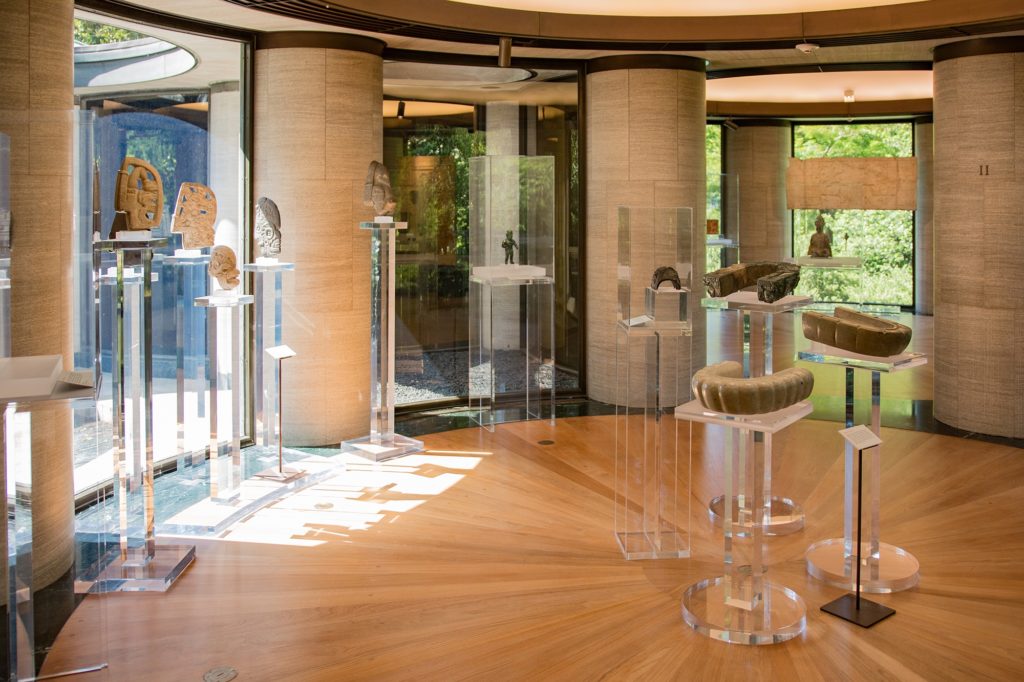
The Pre-Columbian Gallery designed by Philip Johnson ©Dumbarton Oaks
I asked about his advice for home gardeners, thinking of my own plot, which currently wastes in a tangle of weeds. He said, “Do the best you can. Avoid a dogmatic mindset. Everything’s on a spectrum. I have plenty of weeds in my own lawn at home.”
(Really? I thought.)
“Make sound decisions for what works for you. If you think you are making a difference in your landscape, then that’s good.”
He continued, ”There are so many places that need volunteers. If you sign up for weekend invasive removal projects, it’s amazing what these people can teach and how much you can learn in a day. I’ve been part of one of these projects where you rip out woody invasive plants. They teach you about identification and proper ways of removal. You can learn good gardening hacks. If you find a garden the fits your interests, you can really learn a lot. I believe that any significant garden is only going to survive with volunteers, because budgets just get tighter and workloads increase. A lot of issues with climate change and pest outbreaks make our job harder.”
He praised the people who care for the neighboring Dumbarton Oaks Park, which is owned by the National Park Service and supported by local businesses and organizations like Dumbarton Oaks Park Conservancy.
“When you plant an elm tree, you hope that it’s going to be there for a hundred years.”
“Dumbarton Oaks Park has a great crew of volunteers. There is no way they could do what they do without volunteers. If you are interested in Beatrix Farrand and in historic gardens, you can learn some things as you are pulling ampelopsis (porcelain berry). You can learn about the historic character of that space.”
He went on to say, “I am so lucky to have a great staff of passionate people. The garden is in transition now and it’s always in transition. I’m looking forward to continuing to restore Farrand, and where there are elements missing getting them back in and where there are elements that just need some love and attention, we’re giving them that. It’s an exciting time for us at one hundred years. Some of these decisions I’m hoping are hundred-year decisions. One can hope. When you plant an elm tree, you hope that it’s going to be there for a hundred years.”
One hundred years seems like a long time, but perhaps not so far away, if you think of the children playing in the amphitheater and running for a moment to the Kitchen Garden. They will come back, possibly as volunteers or as visitors for a concert — maybe even as a scholars-in-residence or as leaders in horticulture, continuing Kavalier’s work with the preservation of the gardens. Whatever their roles, I hope they care for the trees and surroundings, while reaching out to the rest of us to enjoy their beauty. And in another century Pan will celebrate, playing merrily with a bit of mischief, as the gardens prosper.
Liz Macklin is an artist and author, who first explored Dumbarton Oaks as a young architect in a drawing class that met in the garden in early spring.
Thank you to Jonathan Kavalier, Erica Borgese and Eliza Davidson for their help in making this article possible.
Photo 6
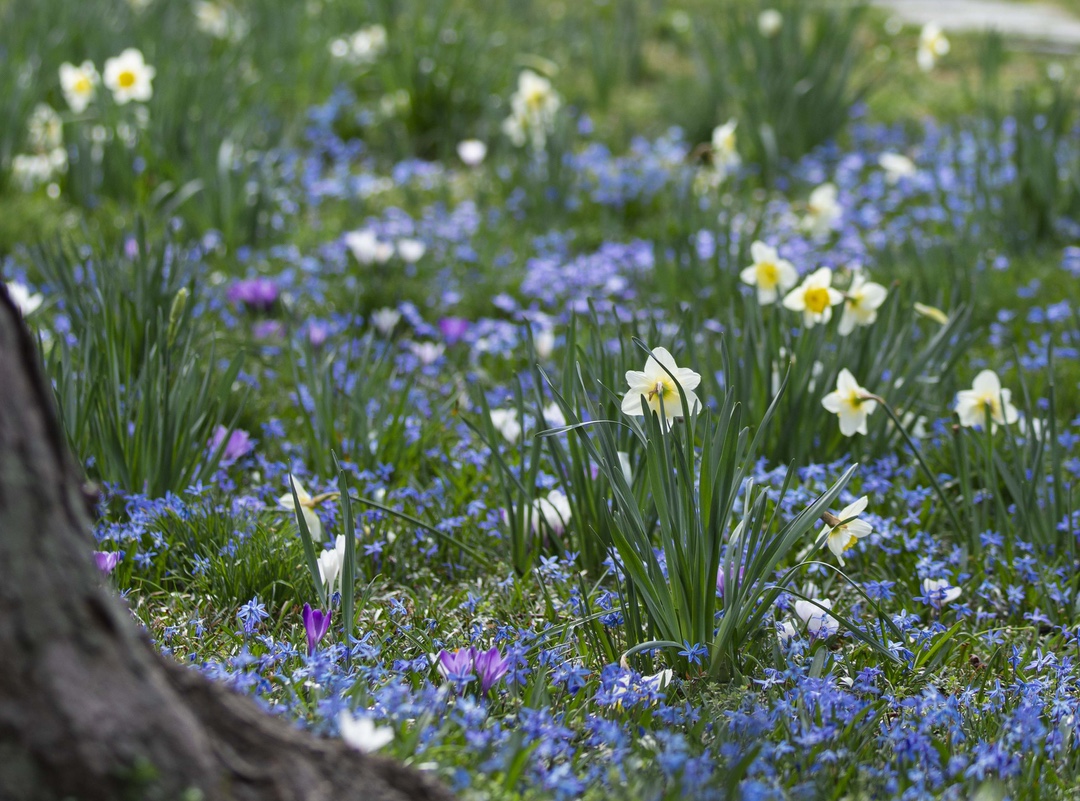
Spring flowers in Mélisande’s Allée
¹Dumbarton Oaks. Lovers’ Lane Pool, https://www.doaks.org/visit/garden/explore/lovers-lane-pool↩︎
²Dumbarton Oaks. About the Lovers’ Lane Pool, https://www.doaks.org/library-archives/garden-archives/drawings-and-photographs-by-garden-area/lovers-lane-pool/about-the-lovers-lane-pool↩︎
³American Conifer society, Cedrus deodara/Deodar cedar/Himalayan cedar, https://conifersociety.org/conifers/cedrus-deodara/ ↩︎
⁴Dumbarton Oaks. Fountain Terrace, https://doaks.org/visit/garden/explore/fountain-terrace ↩︎
⁵Dumbarton Oaks. Composing Environments and Ecologies, https://www.doaks.org/newsletter/composing-environments-and-ecologies↩︎
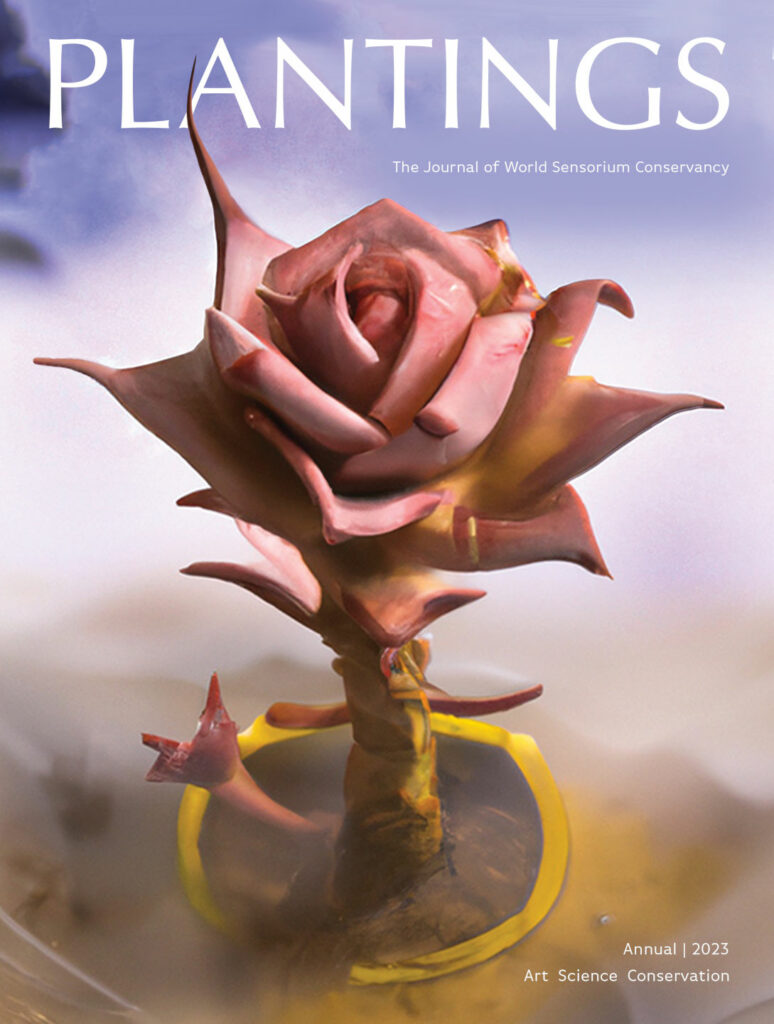
Plantings Print Annual 2023
Do you have the 2023 Plantings print annual?
Plantings cultivates innovative ideas and fresh perspectives, nurturing the global conservation community. Our readers find inspiration in forward-thinking individuals and approaches dedicated to fostering a better life for the planet and all its inhabitants.
The 2023 edition of Plantings is available in our store for shipping.


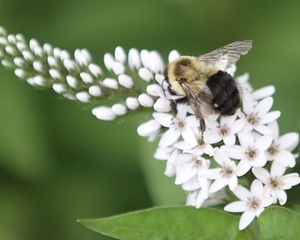
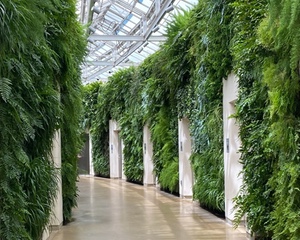
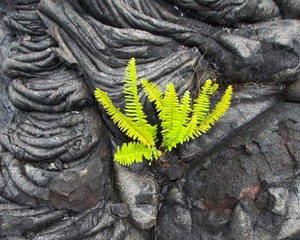
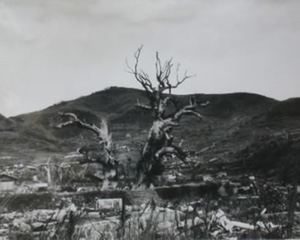
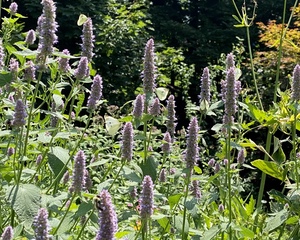
Happy Birthday Dumbarton Oaks! May you live and flourish another 100 years. An inspiring article which gives me hope and ideas for my own garden.